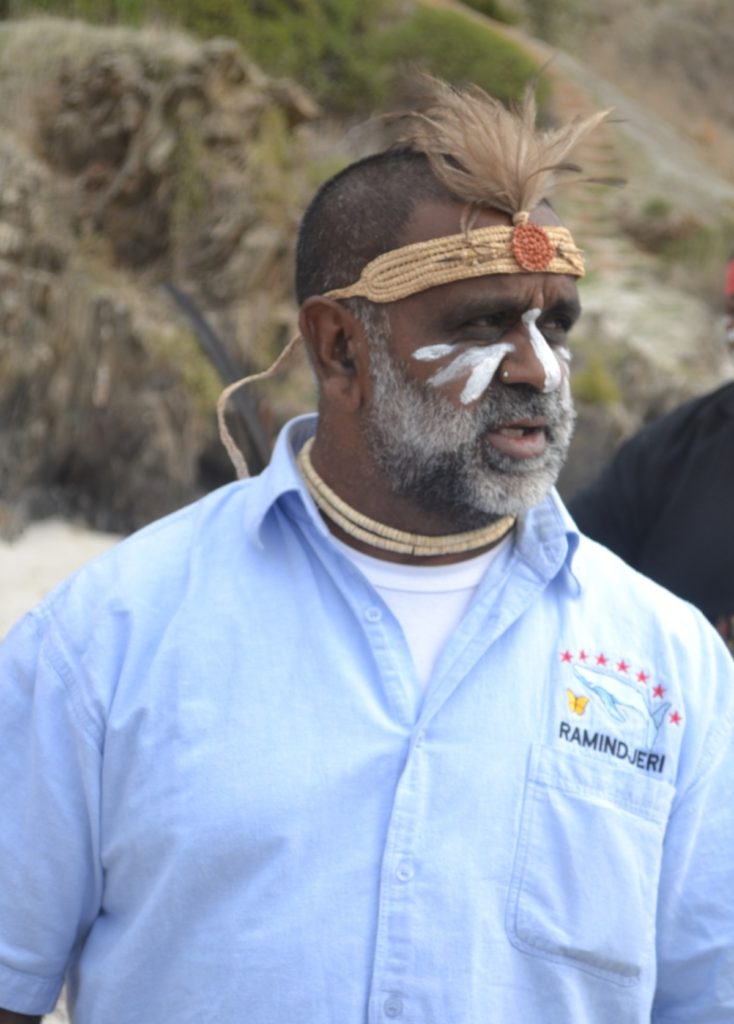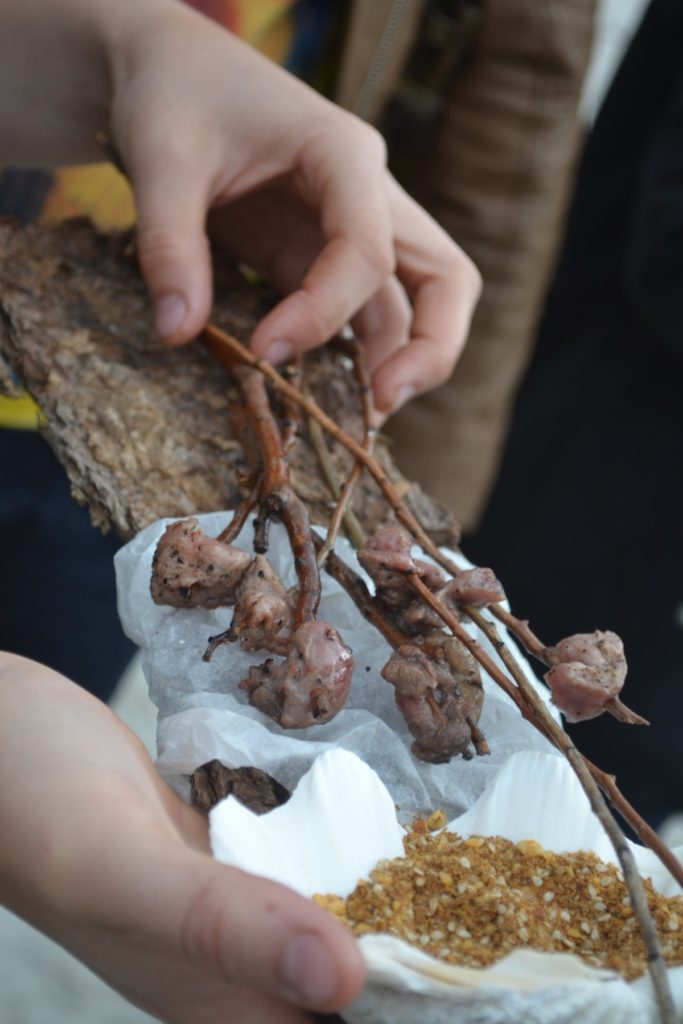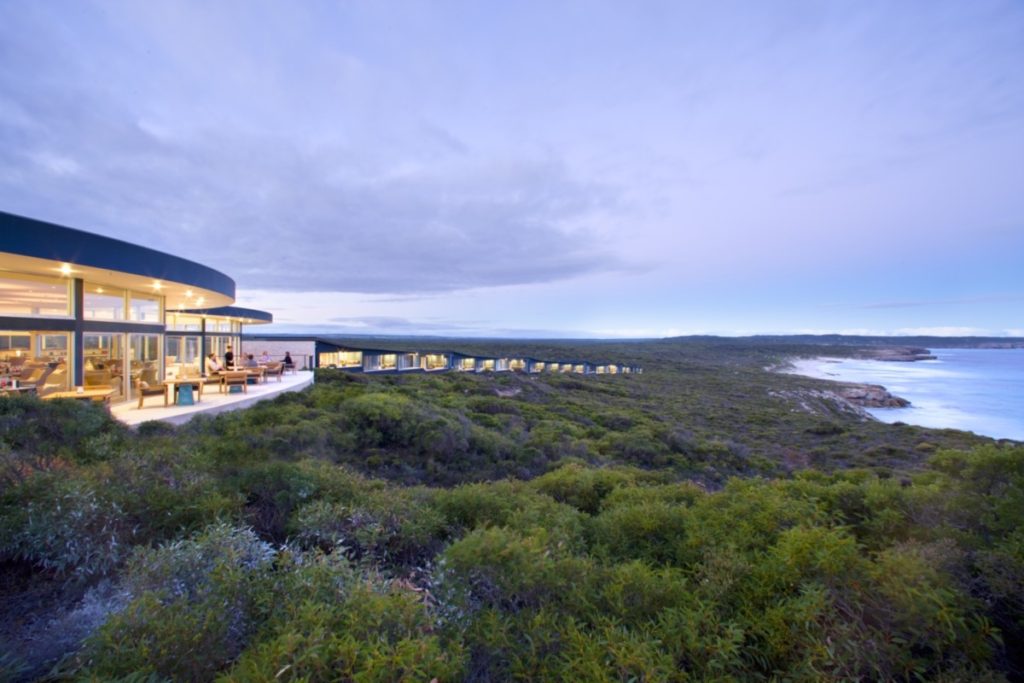Nick Hannaford is grilling kangaroo and possum kebabs over an open fire on the beach. The meat, threaded onto red gum twigs and charring over glowing coals, smells divine. The guests, flutes of sparkling wine in hand, watch in anticipation. Karno Walker, an elder of the Ramindjeri people, recites a native blessing. This is the last day of Feastival, an annual celebration of Kangaroo Island foods.

Kangaroo Island has been called the Australian Galapagos. Almost one third of the Island is dedicated to nature preserves, home to kangaroos, wallabies, koalas, colonies of seals and sea lions and a host of native birds. Rocky cliffs and windswept beaches pounded by surf make for dramatic scenery on the exposed southern coast, while gentle bays and rolling farmland frame the Island’s northern shores. Food producers love the fact that the seas around Kangaroo Island are clean and the land is pollution free.
After our wild appetizers, we follow Hannaford (a third generation owner of Kangaroo Island land who made a name for himself catering events in Queensland’s rainforest for guests such as Mick Jagger) along a winding path through the dunes to an old wool shed that has been converted into a rustic dining hall. Tables are set for a banquet and Hannaford raises a toast to the Kangaroo Island friends and neighbours who have provided the bounty for Feastival’s closing event.

Platters of freshly shucked oysters are passed around and plates piled with locally raised marron (freshwater crayfish) that have been cooked over the campfire. The main course is a succulent wild pig, roasted over coals and served with a heap of blistered crackling. Fish cooked in paperbark, native damper bread and potatoes stuffed with Kangaroo Island sheepmilk feta round out the meal, an homage to the Christmas dinner held by the island’s first official European settlers in 1836.

Wild and beautiful Kangaroo Island was named by British explorer Mathew Flinders, who landed on the northern coast in 1806 and was relieved to find a plentiful supply of kangaroo meat for his hungry men. The island briefly served as the capital of the new British colony of South Australia but when rainfall proved insufficient to sustain a city, the capital moved to Adelaide and Kangaroo Island settlers turned to farming. Today the island’s unhurrried pace and pristine landscapes have made it Australia’s top honeymoon destination and a haven for artisan food producers.
At Southern Ocean Lodge, a stunning luxury hotel overlooking a wild ocean that stretches all the way to Antarctica, chef Tim Bourke is amazed by the ingredients he can source on Kangaroo Island. “It’s easy to be creative when I have such wonderful local foods to work with,” he says, whipping up a pink mayonnaise with oil he’s infused with marron shells.

Bourke grows vegetables and herbs at the Lodge and local suppliers bring him seafood, beef, lamb, venison, pork, farmed abalone, free range chickens and eggs, foraged wildfoods, native spices and Kangaroo Island’s unique Ligurian honey.
Ligurian honey ice cream (the recipe a well guarded secret) is one of the island’s best loved products. At award-winning Kangaroo Island Spirits distillery, Jon and Sarah Lark douse the ice cream with KIS Walnut and Honey Liqueur, a Kangaroo Island taste sensation that’s not soon forgotten. The Larks also make high-quality liqueurs and spirits using other local ingredients such as wild juniper, wild fennel and the samphire plant that grows in swampy sheep pastures.
Kangaroo Island even has its own wine label, Two Wheeler Creek, which produces red and whites wines from grapes grown on the property that produces Andermel marron. Visitors to the cellar door can combine wine tasting with a gourmet lunch at the Marron Café, where the marron come straight from the dam and couldn’t be any fresher.
Kangaroo Island can be reached by ferry from the southern tip of the Fleurieu Peninsula or by plane from Adelaide. Both journeys take about 30 minutes.


